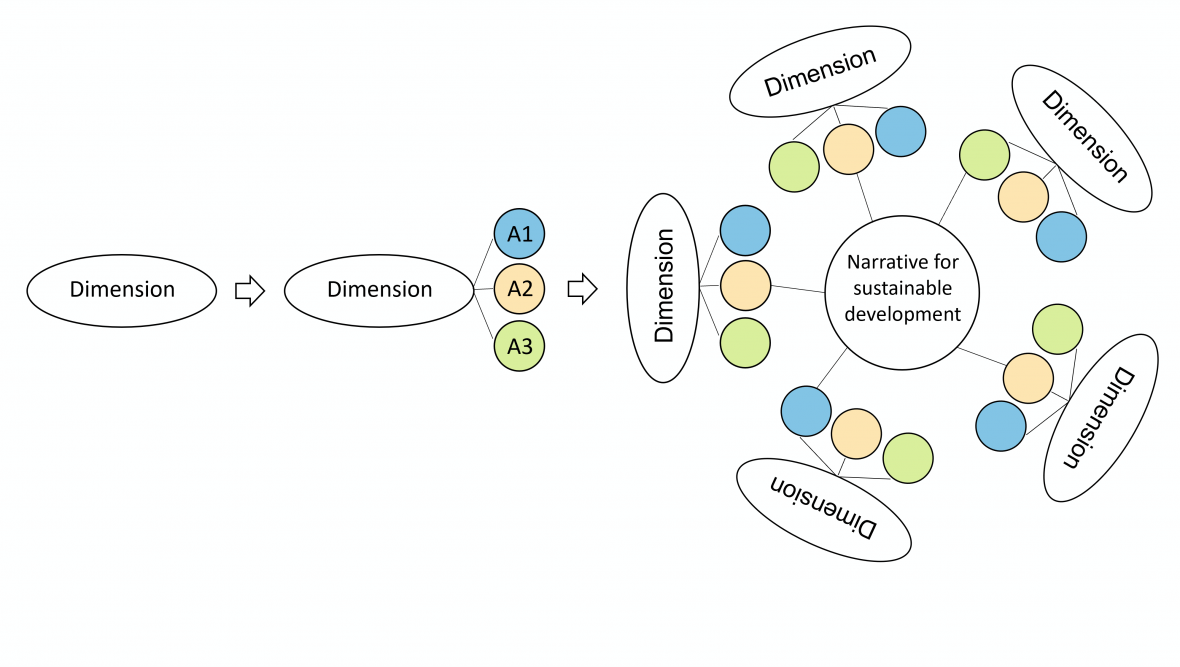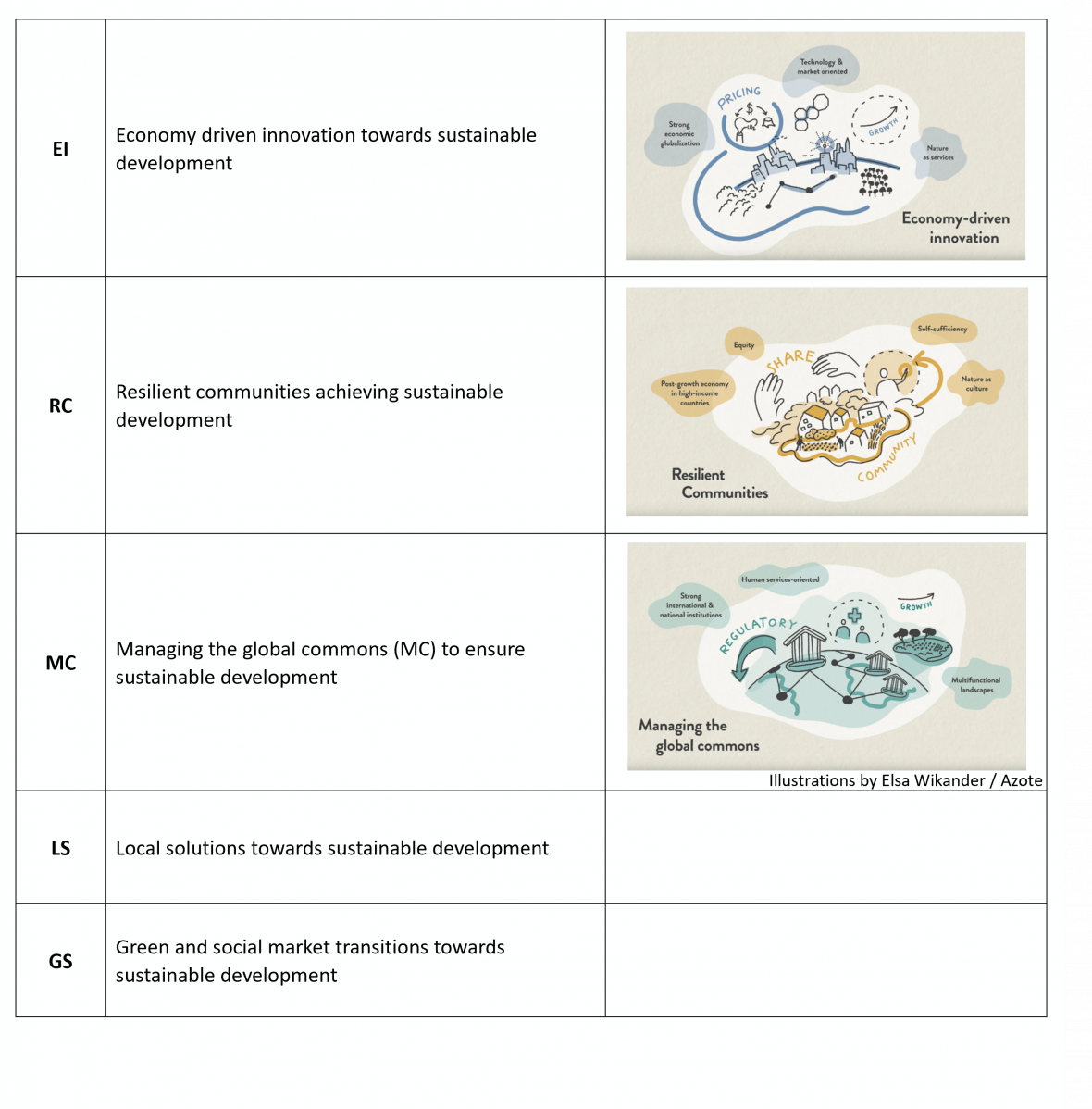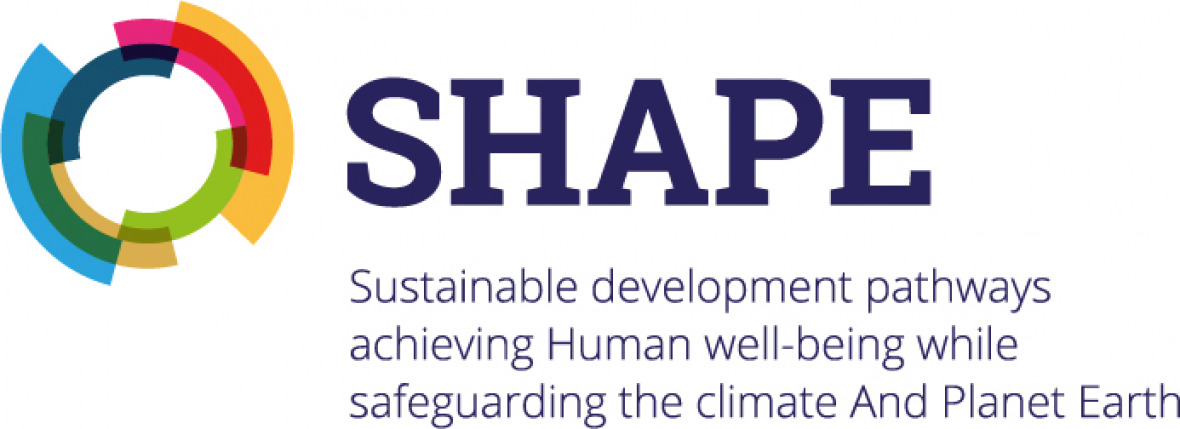The Power of Stories: Why We Need New Narratives for a Sustainable Future, and How Quantitative Analyses Can Support Them
12.12.2022

Ariel Macaspac Hernandez (IDOS), Dorothee Keppler (PIK), Merle Remy (IASS) und Ines Dombrowsky (IDOS)
While the goals adopted under the 2030 Agenda for Sustainable Development are universal, the pathways leading to their achievement are diverse. Due to their different biophysical, socio-economic and political-cultural circumstances, countries are guided by different visions of how the Sustainable Development Goals (SDGs) should be achieved and have different policy options and levers for doing so. Sustainable Development Pathways that describe feasible and, from the perspective of different actors, desirable ways to achieve the 2030 Agenda and the Paris climate goals must take these factors and their diversity into ac-count. Given this, it is clearly not enough to propose just one possible pathway and analyse its potential effects. Each "sustainable development pathway" entails transformation pro-cesses that involve disruptive paradigm shifts and profound changes in society. Instead, there is a need for multiple, positive guiding concepts ("visions") that reflect different circumstances. These visions can best be conveyed through a combination of qualitative narratives and quantitative scenarios that build on them. Analyses can then be developed to describe the positive interactions as well as possible trade-offs between the individual SDGs and proposed measures for their implementation and help to overcome barriers and enhance synergies.
The SHAPE project ("Sustainable development pathways achieving Human well-being while safeguarding the climate And Planet Earth”) has taken up the challenge of identifying and describing such Sustainable Development Pathways (SDPs). An interdisciplinary team of re-searchers is currently developing and analysing new, holistic narratives and scenarios in order to understand how actions to mitigate climate change interact with strategies to achieve the other Sustainable Development Goals. The team uses Integrated Assessment Models to identify and model suitable pathways, which can then be analysed in a second step.
How were the narratives developed?
The new narratives for the Sustainable Development Pathways were developed in a transdisciplinary process by an interdisciplinary team of modelers and social scientists in close collaboration with a group of international stakeholders from practice and research. The narratives were developed across three main steps that built upon each other:
1.) Identification of topics ("dimensions") relevant to achieving sustainable development and that can be captured by Integrated Assessment Modelling, if possible;
2.) Description of alternative strategies for each of these dimensions;
3.) Construction and description of comprehensive narratives resulting from combinations of the various strategies (see Figure 1).


What are the strengths of the new SDP narratives and scenarios?
Due to the methodology used in their development the new narratives and scenarios are:
• Target seeking: The narratives focus on efforts to achieve the goals of the 2030 Agenda, including climate change mitigation, and aim to identify a range of possible solutions. In contrast to exploratory narratives, which provide descriptions of possible variations of the future, target-seeking narratives provide answers to questions about desirable futures. They capture information about both the desired "end point" of development and ways to reach that end point under the current circumstances (IPBES, 2016).
• Holistic: The narratives cover all dimensions of sustainable development, albeit in different degrees of detail and scope. This includes different approaches to governance (hierarchies, markets, networks). This makes them a suitable tool for the critical examination of issues relating to governance and power relations, which are especially relevant to the implementation of measures. Systematic analyses of the inter-actions between different areas of policy implementation (e.g., climate, biodiversity, international development cooperation, etc.) can be used to critically reflect on existing approaches and, where appropriate, develop suitable proposals for adaptation (Dombrowsky et al., 2022; Hernandez, 2021)
• Flexible: The modular structure of this approach (see last section), with its numerous dimensions, for which in turn multiple development alternatives are described, enables future users to co-design their own sustainable development pathways that reflect the governing paradigms and circumstances in their contexts.
• Connecting to relevant discourses in practice and science: The narratives and resulting scenarios engage with contemporary discourses on transformations towards sustainability and a variety of perspectives expressed therein (e.g., degrowth vs. growth). Ultimately, the SDPs are the products of a long-term communication process involving both researchers and practitioners, and their development offers in-sights into how we can overcome communication barriers between quite distinct contexts.
Conclusion
The narratives of the Sustainable Development Pathways (SDPs) and their translation into quantitative scenarios offer positive visions for a sustainable future and insights into what it will take to make these visions reality. As such, they provide an important basis for a much-needed public debate that breaks down the 2030 Agenda into concrete options for action and development across multiple dimensions and scales. The SDPs are well-suited to facilitate debate for the development of policy measures that are coherent, effective and, ideally, socially cohesive.
The new narratives are positive stories that describe how we can achieve the sustainable development and climate goals and which can help us to see the big picture. The model-based, quantitative analyses will improve our understanding of the complex interactions and synergies among affected systems and enable us to better assess the consequences of choosing one pathway or another. The inter- and transdisciplinary approach to the development of the narratives also makes it possible to generate scientific perspectives and in-sights that more closely reflect the complex reality, making them more suitable and attractive for practical application.
This article was originally published on 5 December 2022 on the SDSN Germany blog.
Sources:
Dombrowsky, I., Lenschow, A., Meergans, F., Schütze, N., Lukat, E., Stein, U., & Yousefi, A. (2022). Effects of policy and functional (in)coherence on coordination – A comparative analysis of cross-sectoral water management problems. Environment Science and Policy, 131, 118-127.
Hernandez, A. M. (2021). SDG-aligned Futures and the Governance of Transformation to Sustainability. Reconsidering Governance Perspectives on the Futures We Aspire to DIE Discussion Paper Series(Discussion Paper 30/2021). doi:10.23661/dp30.2021
IPBES. (2016). The methodological assessment report on scenarios and models of biodiversity and ecosystem services. Retrieved from Bonn, Germany.
The research project SHAPE ("Sustainable development pathways achieving Human well-being while safeguarding the climate And Planet Earth") will run until the end of June 2023. The pro-ject’s research and results will be presented and discussed in detail during a virtual wrap-up conference on 16 February 2023.
The project SHAPE is part of AXIS, an ERA-NET initiated by JPI Climate, and funded by FORMAS (SE), BMBWF/FFG (AT), DLR/BMBF (DE, Grant No. 01LS1907A-B-C), NWO (NL) and RCN (NO) with co-funding by the European Union (Grant No. 776608). Scientists participate from Potsdam Insti-tute for Climate Impact Research (PIK), the German Institute of Development and Sustainability (IDOS), the Institute for Advanced Sustainability Studies (IASS), the International Institute for Applied Systems Analysis (IIASA), the Norwegian University of Science and Technology (NTNU), the Stockholm Resilience Centre (SRC) and Utrecht University (UU).
You can find out more about the project at https://shape-project.org/.

